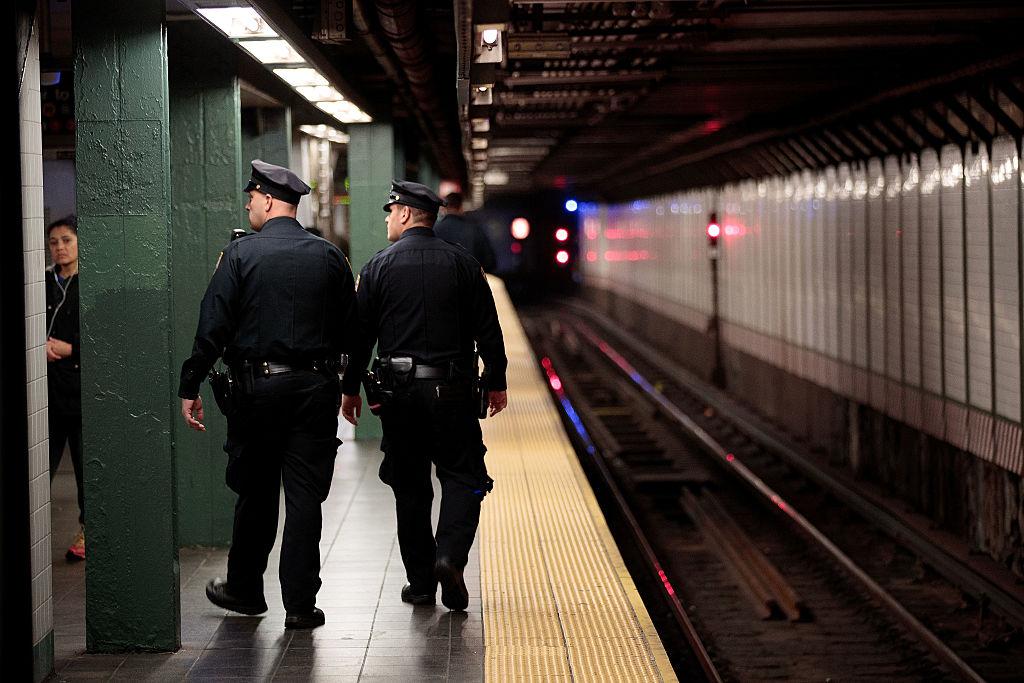Facing Lawsuit, NYPD Changes How Officers Use Sealed Arrest Data
Arrests that result in dropped charges and dismissals are supposed to be sealed. But until recently, the NYPD used these records to target turnstile jumpers.

Each of the six times “J.J.,” a Black man from the Bronx, was arrested, his charges were dropped and the record was sealed. And that was that—or so he thought. If you get arrested but are not convicted of a crime in New York, your record becomes sealed under state law—it cannot be found through public records searches or background checks. The rationale is that people cleared of wrongdoing should not be further targeted just because they have been arrested.
But J.J. had been entered into an NYPD database and labeled a “transit recidivist,” because of this supposedly sealed arrest history. The NYPD’s database includes people repeatedly stopped by police for subway-related offenses like turnstile jumping or walking between train cars.
Being in the database made J.J. more likely to face arrest in the future. NYPD officers are required to arrest transit recidivists who are caught evading the subway fare, rather than let them off with a citation. Until a few months ago, transit recidivists included people whose entire arrest histories had resulted in only dismissals and dropped charges—sealed records that were supposed to be inaccessible.
But in April, the Bronx Defenders sued the NYPD, alleging the department’s use of sealed arrest information for purposes like categorizing transit recidivists broke state law. The department, which is still battling the lawsuit, argues that it is not legally prohibited from using sealed records internally, as long as they are not shared with outside agencies. But at the same time, the NYPD patrol guide has undergone a subtle modification: As of August, only unsealed arrests can be used to label someone a transit recidivist. (The department’s previous “transit recidivist” label counted all arrests towards someone’s inclusion.)
The NYPD did not respond to The Appeal’s request for comment about what prompted the change, but said in a statement, “The police department’s use of these records complies with the sealed records statute since these records are not disclosed to third parties and are used internally by the department for investigative purposes authorized by law and consistent with its public safety obligations.”
Jenn Rolnick Borchetta, deputy director of impact litigation for the Bronx Defenders, told The Appeal in a phone interview that the change is “a recognition that one part of [their] policy was bad—now fix the rest of it.”
The public defenders’ organization says it wants more changes. The April lawsuit alleges that the department is routinely accessing the sealed records of thousands of people and targeting people of color with low-level charges. State law prohibits such internal use of that information, the lawsuit argues, pointing to a statute that says any sharing of sealed records with law enforcement must be sanctioned by a court order.
In a July motion, the NYPD argues that its responsibility to protect people’s sealed records is confined to how it shields that information to avoid “stigma in employment, education, licensing, and insurance.” The law, the department argues, is “not intended to prohibit a court’s, police department’s, or prosecutor’s office’s internal access to and use of sealed records for investigative or other purposes, but instead regulate the distribution of sealed records to outside persons and agencies.”
Bronx Defenders disputed this interpretation in a response filed in state court on Monday.
“The city is arguing that it should be permitted to disclose sealed arrest records throughout the department without first getting a court order,” said Borchetta. She noted that before the state legislature passed the sealing law in 1976, the NYPD warned that such a measure would limit police access to records, thereby impeding investigations. Since its passage, the NYPD has reversed that interpretation of the law’s purpose and continued using sealed arrest information, she argues, effectively deciding “not to comply.”
This alleged noncompliance means that potentially millions of sealed records are circulating within NYPD databases. Between 2014 and 2016 alone, over 400,000 department arrests were sealed, according to the lawsuit. The vast majority of these—330,000—were of black or Latinx people.
Beyond the NYPD’s internal activities with sealed arrest information, the department also frequently shares these records with prosecutors, which can impact the treatment a defendant receives before trial. Bail and plea terms for each of the lawsuit’s three plaintiffs were influenced by their sealed records, the Bronx Defenders’ reply says. “It is common for NYPD officers to provide prosecutors with sealed arrest information,” says Borchetta.
The larger issue of NYPD access to sealed defendant data has been in the public eye in recent months. After an officer shot Saheed Vassell in April, for example, police sources leaked information regarding the charges in four of Vassell’s sealed arrests to the New York Post. Such a leak would be much harder to pull off if accessing those records required a court order. Later that month, the Bronx Defenders filed its sweeping lawsuit against the department.
Oral arguments over the NYPD’s motion to remove its internal use of the records from the lawsuit will be scheduled sometime in the next few months, Borchetta says. According to her, if the NYPD’s motion is granted, the department’s use of the records will not be subject to subpoenas and the legal discovery process. “They want to get rid of that part of the lawsuit,” she says, “because they don’t want us to find out how they use this.”
